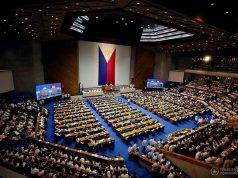Sept. FDI net inflow biggest in 5 months; down since March
FOREIGN DIRECT INVESTMENTS (FDI) — a key generator of gainful jobs — notched their biggest net inflow in five months in September which nevertheless was down annually for the seventh month in a row, according to data which the Bangko Sentral ng Pilipinas (BSP) released on Tuesday.
FDI net inflows fell by 2.9% to $566 million in September from $582 million a year ago as drops in reinvested earnings and foreign parents’ lending to their Philippine units capped the overall impact of a turnaround in equity infusions.
It was the biggest net inflow since April’s $963 million but was also the fifth annual drop since March.
September saw equity other than reinvested earnings turn around to $96 million in net inflow from the past year’s $$117-million net outflow, as gross placements grew 79.5% to $125 million from $169 million and withdrawals fell by 84.8% to $28 million from $187 million. “Equity capital placements during the period were sourced largely from Japan, Taiwan, the United States, Hong Kong and Netherlands,” BSP said in a news release, adding that funds went mainly to financial and insurance sectors, as well as manufacturing and real estate.
On the other hand, foreign parents’ investments in debt instruments of their Philippine subsidiaries or affiliates fell 36% to $395 million from $618 million, while reinvested earnings dropped 9.4% to $74 million from $82 million.
The nine months to September saw FDI net inflow drop 36.9% to $5.118 billion from $8.108 billion.
Reinvested earnings grew 12.5% to $746 million from $663 million in the same comparative nine months.
But intercompany lending dropped 32.6% to $3.741 billion from $5.546 billion.
Moreover, equity other than reinvested earnings dropped 66.7% to $632 million from $1.9 billion, as gross placements fell by 45.7% to $1.239 billion from $2.282 billion and withdrawals grew 58.7% to $607 million from $382 million. Equity capital placements in the 10 months to September came largely from Japan, the United States, Singapore, China and South Korea, BSP said.
FDIs tracked by the central bank involve actual investment flows.
In contrast, those tracked by the Philippine Statistics Authority (PSA) involve planned projects approved by the government’s seven main investment promotion agencies.
BSP said its FDI data include investments with at least 10% foreign ownership — a threshold not used by the PSA.
PSA data also include credit from foreign sources not related to the domestic borrower.
Finally, BSP’s FDI data are presented in net terms, while those of the FDI do not account for equity withdrawals.
Committed FDI approved by the government’s seven main investment promotion agencies grew more than fourfold to P182.44 billion in the third quarter from P42.64 billion in the same three months last year. The latest tally was the biggest amount since the P230.22 billion approved in 2012’s fourth quarter.



